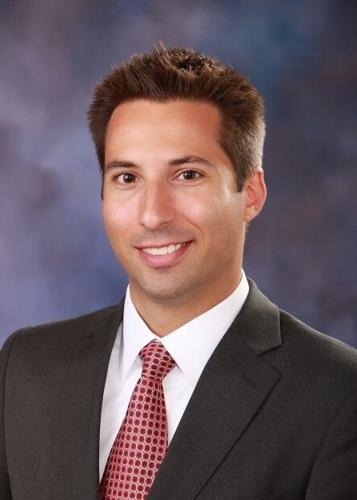ST. LOUIS ÔÇö In a move business leaders hope can unify and refocus the regionÔÇÖs policy priorities and growth efforts, the boards of five prominent private civic groups announced Thursday that they have agreed to merge into a new organization, Greater ├█ª┐┤½├¢ Inc.
The merger combines the ├█ª┐┤½├¢ Regional Chamber; business attraction group AllianceSTL; Downtown STL Inc.; urban core investment organization Arch to Park LLC; and Civic Progress, the club of big CEOs that has historically backed major regional initiatives.
Arch to Park CEO Jason Hall, a Granite City native and former Bryan Cave lawyer who headed the Missouri Department of Economic Development under former Gov. Jay Nixon, will lead Greater ├█ª┐┤½├¢ Inc. Andy Taylor, executive chairman of rental car giant Enterprise Holdings and a major philanthropist who also chairs Arch to Park, will serve as founding chairman of the new group.
People are also reading…
ÔÇ£Doing this gives us one voice, gives us more focus, it will force us to make an agenda of things we need to get done,ÔÇØ Taylor said. ÔÇ£WeÔÇÖre off to a very good start. ThereÔÇÖs not been one person, one entity thatÔÇÖs said this is a bad idea. ItÔÇÖs like everyone had this collective epiphany.ÔÇØ
├█ª┐┤½├¢ÔÇÖ political fragmentation ÔÇö a central city devastated by population loss, a county divided into 80-plus municipalities and a half-million people in Illinois who sometimes seem connected to ├█ª┐┤½├¢ by just a handful of bridges ÔÇö has long been an albatross some business and political leaders say stymies efforts to reverse stagnant population and economic growth.
Fragmentation has manifested itself in private economic development organizations, too, with the chamber and Civic Progress speaking for similar constituencies. The regionÔÇÖs front door, downtown, had its own booster group in Downtown STL. Two of the groups in the merger, AllianceSTL and Arch to Park, have been created only within the last three years.
Backers say the new organization will represent the whole metro area ÔÇö 14 counties across two states and the city of ├█ª┐┤½├¢ ÔÇö to direct regional efforts on business growth and public policy.
ÔÇ£Inclusive economic growth is going to be a key focus of that,ÔÇØ Taylor said.
More minority voices
Valerie Patton, a longtime chamber executive who will become chief diversity, equity and inclusion officer of the new organization, said she will be ÔÇ£intentionalÔÇØ about including ÔÇ£black and brownÔÇØ voices who have been left out of regional agenda-setting in the past.
ÔÇ£It means bringing what we call next-gen leaders to the table that have not necessarily been at the table before,ÔÇØ she said.
Reorienting the regionÔÇÖs approach to economic development comes as ├█ª┐┤½├¢ÔÇÖ traditional business groups, the chamber and Civic Progress, have seen their clout wane in recent years.
The chamber lost many key staffers, including Hall, while it was led by Joe Reagan, who was ousted in 2018 following years of deficits, complaints from employees and an internal review that found a lack of focus on strategic priorities. The chamber CEO installed to right the ship, former UMB Bank ├█ª┐┤½├¢ chief Tom Chulick, said in June he would retire at the end of the year.
Civic Progress has also seen many of its members transition from CEOs to the heads of branch offices as mergers and acquisitions took corporate headquarters, and the C-suites, elsewhere.
Hall, 45, represents a new generation of civic leadership for the region. Arch to Park, a private company founded as an investment vehicle for risky but strategic real estate investments in the urban core, had slowly begun to take a more assertive role in public affairs, funding major planning efforts for downtown and the areaÔÇÖs geospatial ecosystem along with the STLMade branding campaign for ├█ª┐┤½├¢.
The inclusion of Downtown STL and Arch to Park in the organization signals a greater focus on the central city as the regionÔÇÖs anchor. Greater ├█ª┐┤½├¢ Inc. is building on work begun by past leaders who recognized the importance of the urban core, Hall said, referencing former Washington University Chancellor William DanforthÔÇÖs decision to keep the medical center in the Central West End.
Hall acknowledged that retaining a distinct division within Greater ├█ª┐┤½├¢ focused on the urban core ÔÇö CentralCitySTL ÔÇö sends a signal that ÔÇ£if you want to grow the region, you have to have a strong core.ÔÇØ Economic development groups in cities such as Charlotte, North Carolina, and Des Moines, Iowa, place strong emphasis on building their downtowns, and the current head of Downtown STL Inc., Missy Kelley, will take a senior position in Greater ├█ª┐┤½├¢ Inc.
ÔÇ£This makes it very explicit,ÔÇØ Hall said. ÔÇ£I think that is a structural shift, and I think thatÔÇÖs going to be reflected in the agenda.ÔÇØ
Other divisions in the new organization also will retain the focus of their predecessor organizations. The chamber will become ChamberSTL and continue to focus on public policy and advocacy. AllianceSTL, led by economic development veteran Steve Johnson, will continue to focus on business attraction.
The fourth division, the Greater ├█ª┐┤½├¢ Foundation, will be led by Patton and focus on raising money to support Greater ├█ª┐┤½├¢ Inc.ÔÇÖs philanthropic initiatives and larger agenda. A more prominent foundation led by a regional agenda-setting organization, Hall said, will be better positioned to attract national foundation dollars that can help execute strategic initiatives.
ÔÇ£ItÔÇÖs going to feel new because itÔÇÖs going to be so much more elevated and strategic,ÔÇØ Hall said.
New development plan
Much of the groupÔÇÖs initial agenda will be set by a soon-to-be-released metro-area plan led by economic development expert Bruce Katz of New Localism Advisors. Hall and Patton expect talent attraction and strengthening the urban core to be top priorities in that report.
ÔÇ£The Katz report is one of the major catalysts in setting the agenda,ÔÇØ Patton said.
The merger doesnÔÇÖt unify all of ├█ª┐┤½├¢ÔÇÖs economic development efforts. Local governments will still retain their own economic development offices. The ├█ª┐┤½├¢ Development Corporation and the ├█ª┐┤½├¢ Economic Development Partnership, which is more ├█ª┐┤½├¢ County-focused but also performs business attraction efforts in the city, will remain prominent.
The civic group left out of the merger is the Regional Business Council, formed about 20 years ago to represent mid-size businesses and led since then by CEO Kathy Osborn. Many of its larger members are also represented by the chamber or Civic Progress, such as Ameren, Centene, Commerce Bank, BJC HealthCare, Mercy and SSM Health.
Hall said that the RBC is structured differently than an economic development organization and that Osborn is a ÔÇ£very strong partner and very supportive of this.ÔÇØ
The corporate community is united behind the effort, Taylor said, and he and other backers of Greater ├█ª┐┤½├¢ Inc. are reaching out to involve a wider group of business and civic leaders who want to help the city thrive.
ÔÇ£We want to engage ├█ª┐┤½├¢ patriots who want to get things done,ÔÇØ Taylor said.
CIVIC MERGER: As five ├█ª┐┤½├¢ civic groups make plans to combine their efforts, David Nicklaus and Jim Gallagher discuss what was wrong with the old, fragmented approach. They say the new structure looks good, but the proof will be in what the merged group can accomplish.
As five civic organizations merge, the group that once epitomized corporate power in ├█ª┐┤½├¢ will essentially cease to exist


















